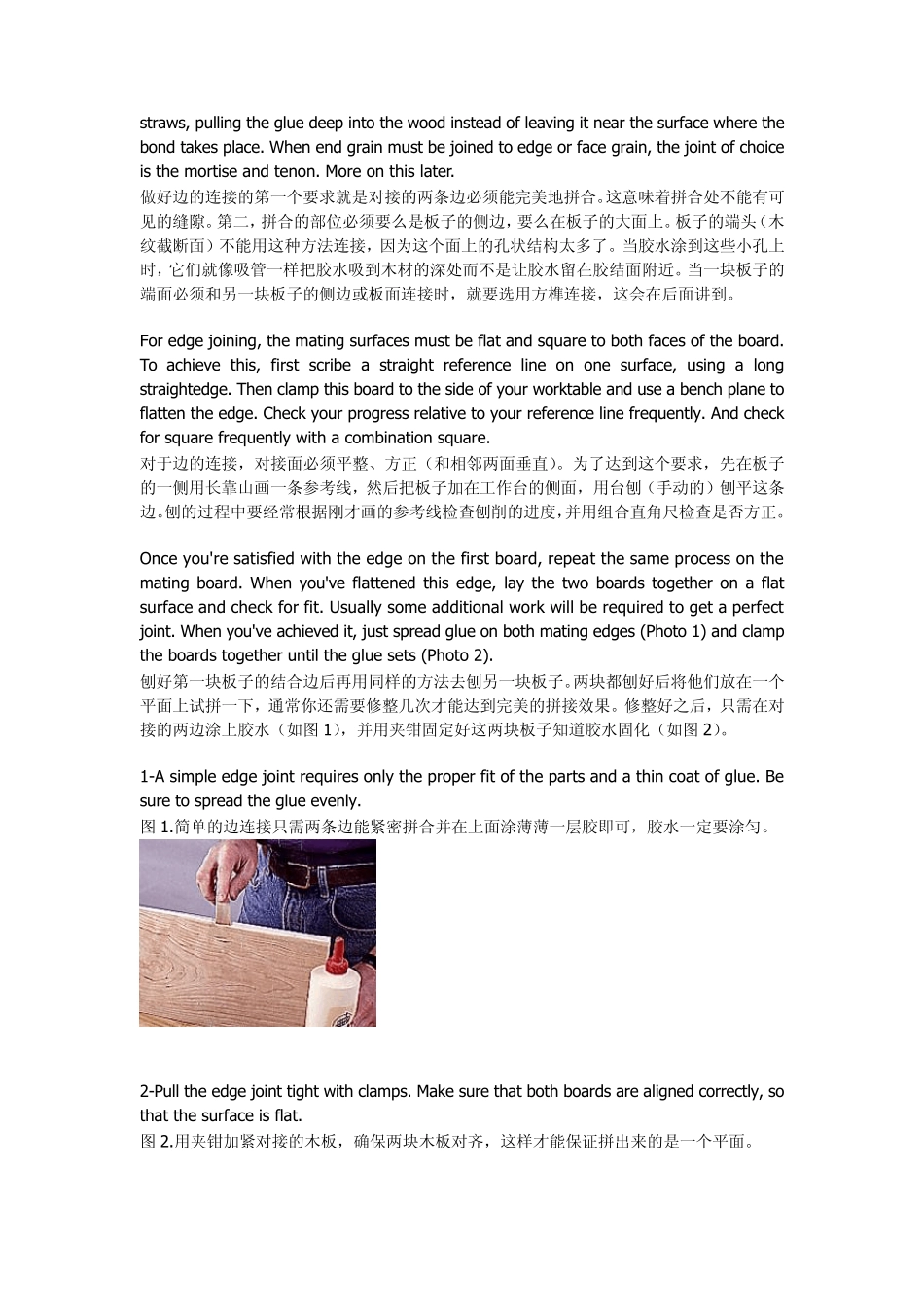WOODWORKING GUIDE: BASIC JOINERY 木工指南:基本连接方式 Close isn't really good enough. A perfect fit is what counts. ―差不多‖还不够好,我们要的是精准的结合。 When building furniture, there are many ways to construct joints. The simplest are those that use mechanical fasteners, like nails and screws. While these are sometimes appropriate, they're not often used in first-class work, especially in visible areas. What's preferred is a direct joint between parts, bonded with glue. 做家具的时候,有很多连接构件的方法。最简单的就是使用机械连接件,比如顶子、螺丝。虽然这办法有时候适用,但在高级木作尤其是看面上却很少使用。人们更喜欢构件之间直接通过胶水来连接。 Of course, the type of joint you need depends on a variety of factors, like the nature of the materials being joined, the function of the joint, strength and appearance requirements, what machinery and equipment are available, and your own level of skill. Whole books are devoted to this discipline–and most are far from comprehensive because the possibilities are almost endless. In light of this, joinery can certainly seem intimidating to the beginner. But it doesn't have to be. By mastering two primary joints, the edge joint and the mortise and tenon, you can build an astounding array of furniture. 当然,选用哪种连接方式取决于多种因素,包括所要连接材料的性质、连接点的功能、强度和外观的要求、可用的工具装备以及你的技术水平。有很多书整本都在讲这些内容,但大多都讲得不全面,因为有几乎无数种可能的情况。鉴于此,连接方法的内容对于新手来说往往很吓人。但实际上大可不必,只要掌握两种主要的连接方法——边的连接和方榫连接——你就能做出很多种家具了。 Edge Joints 边的连接 The first requirement of a good edge joint is that the two mating surfaces must fit together perfectly. This means there are no discernible gaps. Second, the mating s...


